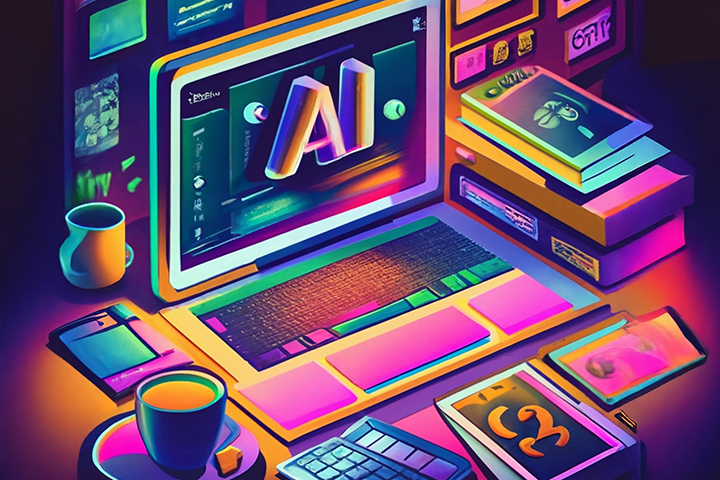In the evolving landscape of design, AI for open-source graphic design is emerging as a groundbreaking force. This fusion of artificial intelligence with open-source platforms is redefining how designers create, collaborate, and innovate. By understanding this transformation, digital creators can harness these tools to elevate their creative processes.

Understanding AI in Graphic Design
Artificial intelligence, or AI, is a branch of computer science that aims to create systems capable of performing tasks that usually require human intelligence. In graphic design, AI tools are programmed to understand and replicate human creativity, offering assistance in various design elements such as layout, color schemes, and typography.
Why Open-Source Matters
Open-source software is characterized by its free availability for use and modification. This approach promotes collaboration and transparency, allowing designers to customize tools to fit their unique needs. The integration of AI with open-source platforms is particularly powerful, as it democratizes access to advanced design technologies.
How AI Enhances Open-Source Design
AI for open-source graphic design offers numerous enhancements. AI tools can automate repetitive tasks, suggest design improvements, and even generate creative ideas. This not only saves time but also allows designers to focus on more strategic aspects of their projects.
Automating Repetitive Tasks
One of the primary advantages of AI is its ability to handle mundane tasks that often consume valuable time. From resizing images to adjusting color balance, AI can streamline these processes, enabling designers to concentrate on more creative efforts.
Generating Creative Ideas
AI algorithms can analyze vast amounts of data to generate design suggestions that might not be immediately apparent to human designers. This capability is particularly useful in brainstorming sessions, where AI can propose innovative concepts based on existing trends and patterns.
Popular AI Tools in Open-Source Design
Several AI tools have become staples in the open-source design community. These include platforms like GIMP and Inkscape, which have integrated AI functionalities to enhance their offerings. These tools provide designers with powerful capabilities to produce high-quality designs.
GIMP with AI Plugins
GIMP, a popular open-source image editor, has embraced AI through various plugins. These plugins offer features such as automated image enhancement and intelligent object selection, making it easier for designers to achieve professional results.
Inkscape’s AI Integration
Inkscape, known for its vector graphics capabilities, has also incorporated AI features. These include pattern recognition and automated vectorization, which help designers create complex illustrations with ease.
The Impact on Collaboration
The integration of AI in open-source graphic design fosters better collaboration among designers worldwide. Open-source platforms enable multiple contributors to work on projects simultaneously, while AI tools facilitate communication and streamline workflows.
Future Prospects of AI in Open-Source Design
The future of AI in open-source graphic design looks promising. As AI technologies continue to evolve, we can expect even more sophisticated tools that offer enhanced functionalities. This will further empower designers, allowing for unprecedented levels of creativity and innovation.
Challenges and Considerations
Despite its potential, the integration of AI in open-source design does come with challenges. These include ensuring data privacy, managing the complexity of AI systems, and addressing the ethical implications of AI-generated content.
Data Privacy Concerns
With AI analyzing vast amounts of data, maintaining data privacy is crucial. Open-source platforms must implement robust security measures to protect user information.
Complexity of AI Systems
AI systems can be complex, requiring users to have a certain level of technical expertise. This can be a barrier for some designers, highlighting the need for user-friendly interfaces and comprehensive training resources.
Conclusion
In conclusion, AI for open-source graphic design is a powerful combination that is reshaping the design industry. By leveraging AI tools, designers can enhance their creativity, improve efficiency, and collaborate more effectively. As we look to the future, the potential for innovation in this space is limitless.

FAQ Section
What is AI in graphic design?
AI in graphic design refers to the use of artificial intelligence technologies to assist in various design tasks, such as automating repetitive processes, generating creative ideas, and enhancing design elements.
How does open-source benefit designers?
Open-source platforms benefit designers by providing free access to software that can be customized and improved upon, fostering collaboration and innovation within the design community.
What are some popular AI tools for graphic design?
Popular AI tools for graphic design include GIMP and Inkscape, both of which have integrated AI functionalities to enhance their capabilities and provide designers with powerful tools for creating high-quality designs.







